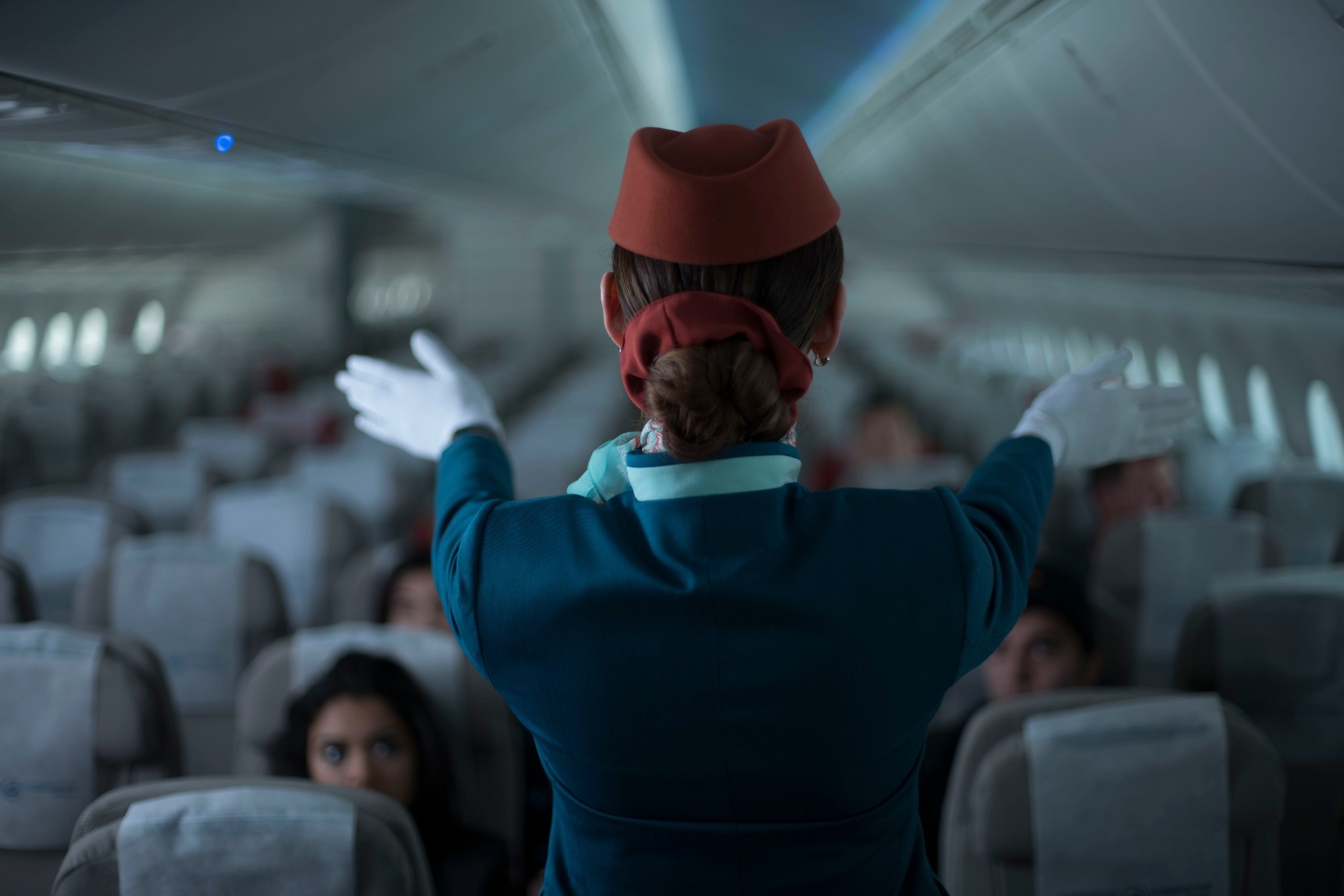A new study uncovers how working at 35,000 feet may disrupt DNA repair and immune function in flight attendants, offering fresh insights into the health risks faced by cabin crews and the urgent need for stronger protections.
 Study: Suppressed DNA repair capacity in flight attendants after air travel. Image Credit: Feruzbek / Shutterstock.com
Study: Suppressed DNA repair capacity in flight attendants after air travel. Image Credit: Feruzbek / Shutterstock.com
An increased cancer risk and compromised reproductive health among flight attendants (FAs) could be due to impaired genomic stability and altered immune responses linked to their air travel. A recent study in the journal Scientific Reports investigates whether alterations in DNA damage and repair in FAs are related to flight travel.
Occupational hazards and cancer risk in FAs
FAs experience strong radiological and toxin exposure from cosmic radiation and cabin air. These workers are also exposed to many biological, physical, and psychosocial stressors through difficult interactions with passengers or quick turnaround times between flights.
As compared to the general population, epidemiological studies have reported that FAs are at a greater risk of developing breast and skin cancer, as well as non-Hodgkin lymphoma, and experiencing adverse reproductive outcomes. However, the underlying mechanisms associated with this increased cancer risk and other health issues in FAs remain unclear.
Previous studies have reported that environmental and occupational exposure to DNA-damaging agents can lead to transcriptional stress, cell death, genomic instability, stress, and senescence. Occupational hazards may also increase the risk of DNA damage by inducing inflammatory responses that produce endogenous reactive oxygen species (ROS).
In humans, many DNA repair mechanisms, such as mismatch repair (MMR), base excision repair (BER), non-homologous end joining (NHEJ), homologous recombination (HR), and nucleotide excision repair (NER), are inherently present to protect the native genome from DNA-damaging agents. However, a defective DNA repair system increases the risk of several diseases, particularly cancer.
About the study
This preliminary investigation hypothesized that altered DNA repair and immune responses are the potential underlying mechanisms responsible for increased cancer risk in FAs. To test this hypothesis, the effect of air travel on DNA damage and repair responses in FAs was assessed.
Blood samples from FAs were collected before flight (BF) and after flight (AF). DNA repair capacity (DRC) for DNA repair pathways, including NHEJ, BER, NER, MMR, and HR, was assessed using functional high-throughput, fluorescence multiplex-based host cell reactivation (FM-HCR) assays. FA blood samples were analyzed using an unprecedented method of DNA repair based on host cell reactivation technology in resting lymphocytes.
Blood samples for BF measurements were collected five to 12 hours before flight departure from Boston Logan International Airport, and blood samples for AF assessments were collected within 1.5 hours of landing at the same airport. The duration between departure and return varied between 27 hours and 10 days, depending on each individual’s flight schedule.
Study findings
This pilot study included a small sample of nine FAs, three of whom were male and six females between 24 and 64 years of age, were included in the research. All study participants were White and non-smokers, whereas five individuals were considered overweight. The employment duration as an FA ranged from two to 41 years.
Employment duration and age were associated with chronic mutagenic exposure and disease risks. Differential blood cell counts indicated the impact of flight travel on the immune system.
There was no significant difference in the blood cell count landscape between the BF and AF samples. However, lymphocyte counts were significantly higher in AF samples, suggesting an inflammatory response associated with flight travel-related exposures.
Higher basophil counts were also observed in AF blood samples; while a statistically significant increasing trend was noted in a subgroup of FAs (after excluding two individuals with notably high counts), the trend did not reach statistical significance when all nine participants were included due to high variability. Likewise, no statistically significant difference in the average basal DNA damage was observed between BF and AF samples.
DNA repair kinetics were measured in response to secondary exposure to a DNA-damaging agent. A statistically insignificant trend towards a marginal increase in the time needed to repair initial genomic DNA damage was observed in AF samples compared to BF samples using the CometChip assay. Thus, increased DNA damage could be due to impaired DNA repair, particularly linked to impaired single-strand breaks (SSBs) repair by BER processing, which may arise from oxidative DNA damage.
Although most ionizing radiation (IR)-induced DNA damage was repaired within one hour, considerable heterogeneity in repair kinetics data was observed. The paper detailed that while some individuals' after-flight samples showed slower repair kinetics compared to their before-flight samples, others showed more rapid kinetics, highlighting inter-individual differences and varied responses to air travel.
Although no significant difference in transfection efficiency between BF and AF samples was observed, the FM-HCR analysis identified alterations in DRC in some pathways in AF and BF samples. As compared to the BF samples, a significant reduction in the repair of oxidative DNA damage and IR-induced plasmid damage was observed in the AF samples.
Conclusions
The findings from this pilot investigation, which involved a small number of participants, indicated alterations in blood cell count, decreased activity in repairing oxidative and IR-induced genomic lesions, and heterogeneity in repair kinetics in AF samples of FAs as compared to their BF samples. These observations suggest a potential mechanistic link where flight-related exposures might simultaneously promote inflammatory processes that increase oxidative DNA damage while also suppressing the DNA repair mechanisms that protect against such damage, contributing to genomic instability. These results should be interpreted with caution, given the study's scale.
This initial study serves as the foundation for future large-scale studies on in-flight crew, which are needed to confirm these preliminary findings and may support the development of informative policies to protect FAs from unnecessary health risks.
Journal reference:
- Toprani, S. M., Mordukhovich, I., McNeely, E., & Nagel, Z. D. (2025) Suppressed DNA repair capacity in flight attendants after air travel. Scientific Reports 15(1), 1-17. doi:10.1038/s41598-025-98934-9, https://www.nature.com/articles/s41598-025-98934-9